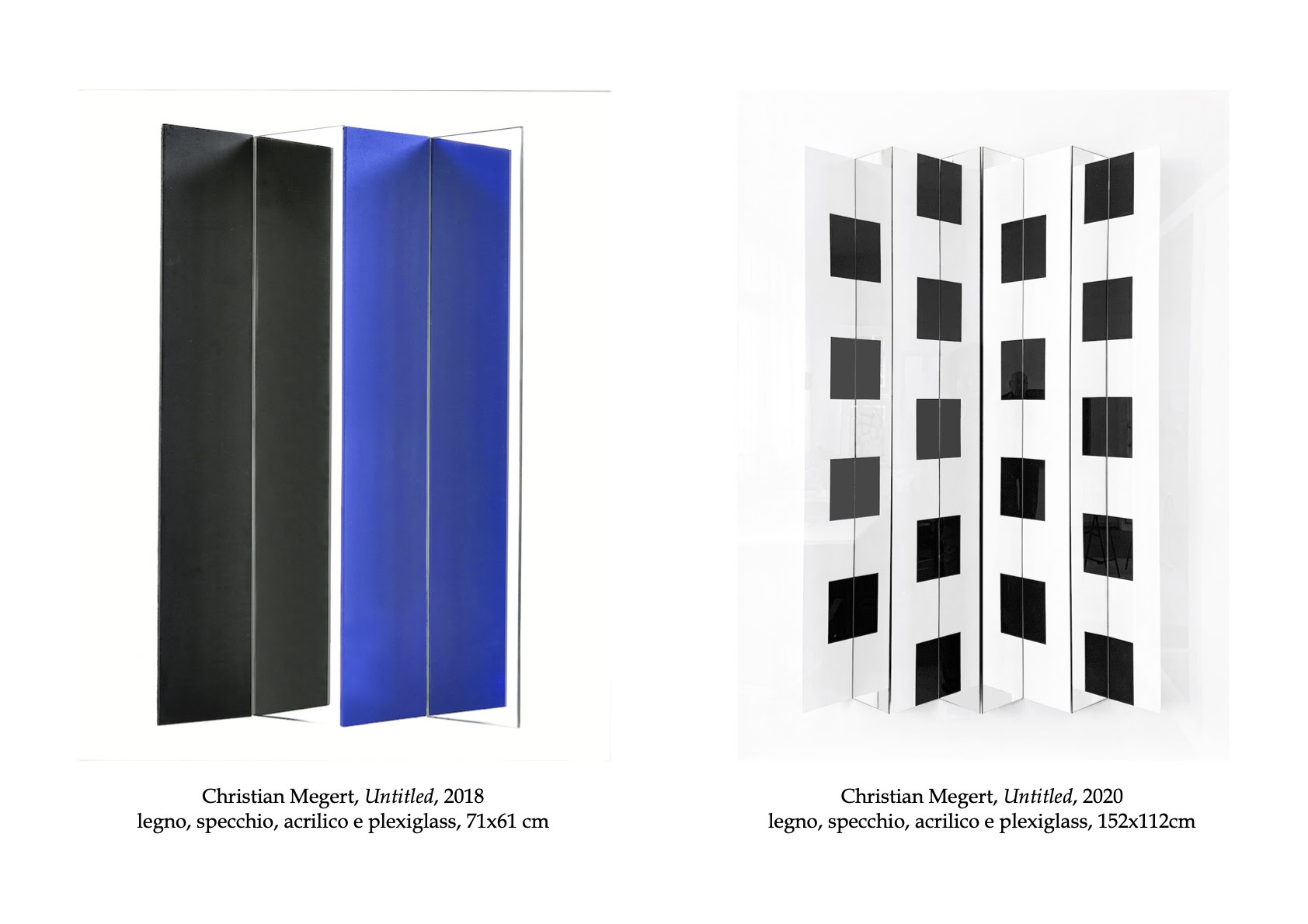Christian Megert – Rotation

La Galleria Allegra Ravizza è lieta di presentare la mostra CHRISTIAN MEGERT – ROTATION, personale dell’artista di origini svizzere Christian Megert (Berna, 1936).
Comunicato stampa
Sixty years after the first appearance of the mirror in Christian Megert’s work, many things have changed in the general attitude of potential art-making tools, and of course also in the personal development of the German artist. Even though the first appearance of a mirror dates back to Cubism – in a painting by Juan Gris, "Le Lavabo" of 1912, there is a fragment of mirror, i.e. a fragment of reality transferred into art... – there is no doubt that the wide-scale use of new materials can be traced to the neo-avant-garde movements of the 1960s: it almost seemed to be a race to discover and use the material with which one would be associated, and by which one would be recognised in the future. The most Duchampian of prophecies – that every object, every material could be used as or for a work – came to be in this period, one which ever more is rightly considered ‘heroic’. But even heroes, if they do not perish while performing their heroic deed, go on to reflect day after day on that moment, and artists (who cannot do anything else) all the more so – it is intrinsic to their nature, with rare exceptions. Despite that, they return obsessively to the idea and the works that have added something to the language of art.
So today, although no one is surprised by the presence of a material deemed so unusual only fifty years ago – and so heretical a century ago – the artist who used it then and continues to use it today does so in a sort of symbiosis with ‘his’ material, without worrying about whether it is still revolutionary, provocative or innovative. Indeed, no artist chooses a medium that ‘goes against’ the establishment, someone, or something: he does so because he feels the time has come to use it to ‘say better’ what he wants to say... If this choice happens to be provocative, revolutionary and innovative, so much the better: it is a matter of the history of art, the history of language but not of the artist (unless he is a Dadaist!) and not of the work, which has its own intrinsic development: one that began as soon as the artist – Megert in our case – decided that yes, the mirror would be the right material for his work. Thus, the provocative charge of the incipit, of which Megert (together with his friends from ZERO ) was nonetheless aware, is watered down in favour of something more lasting (the same thing occurred, for example, with Fontana’s ‘slashes’...). In other words, the provocation has a relatively short lifespan, often replaced by other provocations, while the ‘composition’, the proportion and the concept can far exceed its duration.
At the beginning of the 1960s, Megert (and not only he, it must be said) opted for the mirror – and its opposite: transparent glass – as his material, and today we see results that differ from those of other artists who use the same material, marking the autonomy of the research and the richness of the material used.
Much time passed from the days of the dingy cellars where the ZERO artists first exhibited to those of the vaults of the Swiss banks that now house Megert’s installations – the Swiss National Bank in Berne, for example – but the artist is the same, and this can be clearly seen in his work. Of course, in today’s work everything is clearer, more polished and substantially larger, in keeping with the evolution of a recognised artist and the natural tendency to increase dimensions in art. Furthermore, the conspiratorial underground ‘heroism’ of the early years has been replaced by a kind of ‘analytical calmness’, not unlike a concept of classical beauty that eschews all provocation. The invitation, therefore, is to look at these works not in a ‘political’ but in an aesthetic sense.



